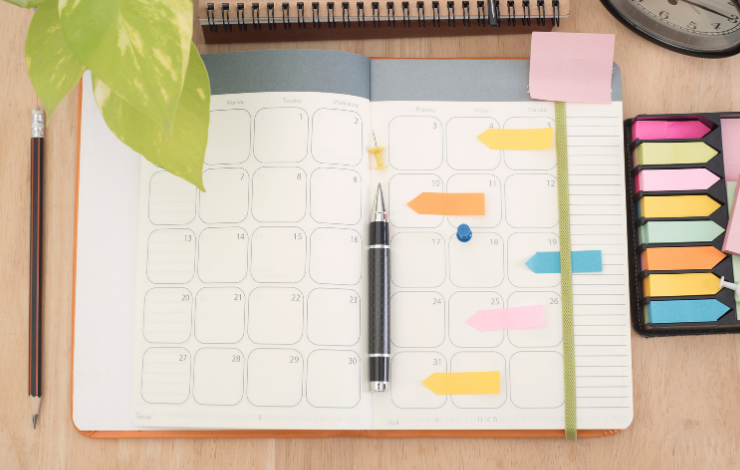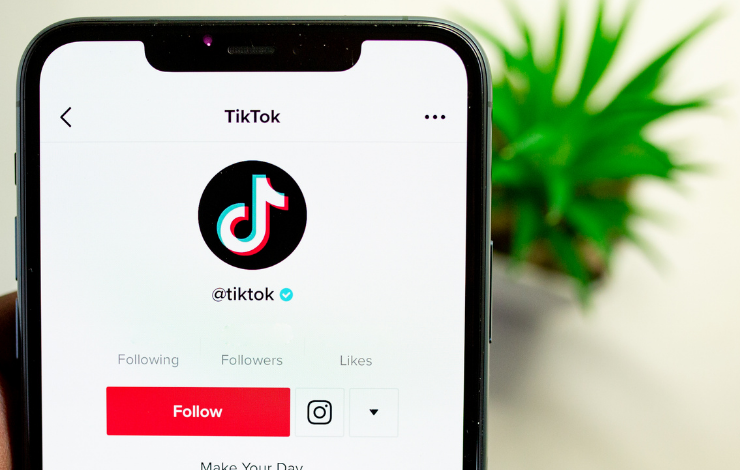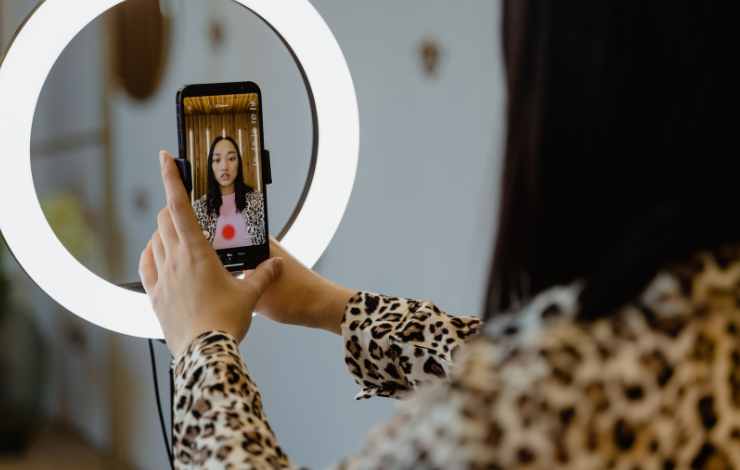
Hashtags are an important part of sharing your book reviews on social media, but they can be tricky to understand. After all, every platform has different rules and etiquette around them. Here we’re sharing tips for how to use hashtags on Twitter, Booktube, Bookstagram, or Facebook.
General Tips
Think about your audience
Hashtags are a search tool, so when you use them you should consider who you want to find your post. Fellow readers? The publisher? Are you attending a virtual event and want to be able to connect with other attendees? Hashtags aren’t simply about getting your content seen, they’re also meant to help you reach the people you most want to engage with.
Look at hashtags before you use them
You should take a close look at any hashtags you want to use. It’ll help to give you a sense of the other types of content under that hashtag—allowing you to see how yours fits in. It’ll also let you know if the hashtag you want to use is overpopulated with other common uses of that phrase.
Let’s take Courtney Summers’ book The Project as an example. Looking at the results for #TheProject on Twitter turns up everything from DIY home repairs to a South Korean singer’s album. However, sometimes books will have a specific hashtag associated with them. For example, Wednesday Books uses #WelcomeToTheProject when promoting The Project.
Publishers may include hashtags above the book’s description on NetGalley, and you can also check the publisher and author’s social media to see if there are any specific hashtags associated with the book.
Write hashtags in CamelCase
CamelCase means you write without spaces or punctuation and capitalize the first letter of each word. For example, when writing a review you’d want to use #TheInvisibleLifeOfAddieLaRue and not #theinvisiblelifeofaddielarue. This helps screen readers differentiate between the different words you’re using in a hashtag. (For more tips on making your book reviews accessible, see our article here!)
Proofread
Any text you share on social media should be read over at least once to check for mistakes, but you should especially avoid a typo in a hashtag since it can dramatically change the reach of your post.
Pay attention to your peers
There are an overwhelming number of hashtags, and it may take some experimenting to find out which ones are the best fit for your platform and purposes. If you’ve used hashtags casually and want to think more strategically about them, look at the hashtags you see your fellow bookworms using. Specifically, look at people using their platforms the way you’d like to use yours—if you’re a blogger, don’t focus on the hashtags you see your favorite writers using, pay attention to the hashtags other bloggers use. Remember that a hashtag’s reach and popularity changes depending on the platform you’re using.
Crosspost carefully
Because different platforms have different rules around hashtags, you’ll want to be careful about how you cross-promote your content. For example, Instagram’s longer captions don’t easily translate to Twitter.
It can be helpful to have a short list of hashtags you consistently use broken into the different platforms you post on—allowing you to copy and paste them when possible.
Twitter Tips
Think about readability
On Twitter, you’re limited to a set number of characters, which means you’ll want to be strategic about the hashtags you choose to use. It may be tempting to go overboard with hashtags. Take a look at this example:
“I’m #CurrentlyReading #BoyfriendMaterial by #AlexisHall a #RomCom from #Sourcebooks and predicting a #FiveStarReview!”
While this example is sure to show up under six different hashtag searches, the meaning is difficult to understand and therefore likely to encourage readers to scroll by rather than engage. Simplify whenever possible and focus on the most important hashtags:
“I’m #CurrentlyReading Alexis Hall’s #BoyfriendMaterial and loving it! Already predicting a five-star read!”
Tagging vs. hashtagging
Oftentimes you can use a tag in place of a hashtag. For example, turn “Thanks for the arc, #NetGalley!” into “Thanks for the arc, @NetGalley!” Once again, this comes down to who you want to see the tweet. In this example, a hashtag may help fellow NetGalley members who search for that hashtag. But if you want to directly thank NetGalley, it’s easier to use the tag.
Instagram Tips
Utilize the comments
As mentioned above, hashtags interspersed throughout a block of text can be confusing. On Instagram, you can include a block of up to 30 hashtags at the bottom of your caption. But some users prefer to include hashtags as a comment on the post, rather than in the caption. This allows you to get all of the benefits of the hashtags without taking up room in your caption.
Of course there are exceptions, such as if you’re participating in a readalong or other event that uses a hashtag. For example, if your Instagram caption reads:
“Here’s my TBR for the #LNYReadathon! What is everyone else reading?”
Your comment can then include hashtags for the specific books, authors, publishers, and genre within your photo.
Following hashtags
On Instagram, users can follow a hashtag. This ensures that any posts using that hashtag show up in their feed (even posts from accounts they may not be following otherwise). Following hashtags can be a great way to discover new accounts, and when you use hashtags your posts will show up in the feeds of anyone who follows those hashtags.
If you create an original hashtag (such as for a readathon or reading challenge), make sure you follow it so you can interact with anyone else who uses it!
Tagging vs. hashtaging
Since every post on Instagram includes both an image and a caption, users are offered more chances to connect directly with the accounts they want to. If you’re reviewing a book from NetGalley, you can tag NetGalley and the publisher in the photo, as well as include both #NetGalley and the publisher in your hashtags. We can’t speak for all publishers, but at NetGalley we find it easier to see your posts in our tagged photos tab on Instagram—so always feel free to tag us directly in those pictures!
Every author has their own preference when it comes to tagging, but they generally agree that they don’t want to be tagged in critical reviews. If your review is a five-star rave, feel free to tag them. If it’s not, stick to tagging just the publisher.
Get specific
There are tons of general book hashtags you can use on Instagram: #Bookworm, #Reader, #Bibliophile, #AmReading. But the more specific you are, the more likely it is that your content will find like-minded readers. For example, you can also include the genre of the books, and many genres have specific hashtags for subgenres (such as sci-fi’s #SpaceOpera). As you explore, you’ll also find hashtags such as #MapMonday or #SockSaturday, which can help inspire the content in your feed.
YouTube Tips
Consider placement
YouTube offers users the ability to add hashtags in the video’s title, above the video title, and hidden tags within the video itself.
Hashtags in the title of the video are best used when participating in an online event, like the way Just Key does in the video titled #BlackAuthorReadathon Reading Wrap Up.
The hashtags that appear beneath the play button are pulled from a video’s description. Only the first three hashtags appear in that section, so you can be strategic about the order. You can have up to 15 hashtags in a description, but YouTube does flag members who consistently use the maximum number of hashtags, so stick to a smaller number of specific hashtags.
The hidden tags mentioned above can be added as you’re uploading your video, and similarly help your video to show up in search results.
Facebook Tips
Hashtags originated on Twitter, and while other social media platforms quickly adopted them, Facebook historically hasn’t offered as many opportunities for growth through hashtags on their platform. However, they’ve recently begun to spruce up their hashtag search pages, making them more enticing for users to browse.
Though Facebook posts have more room for text, it’s best to follow the same best practices for hashtags on Twitter: use them thoughtfully, lightly, and often at the bottom of your post to keep your text from looking cluttered.











Excellent (and helpful) tips. Thanks for sharing.
Thank you for the tips. Appreciate it!
Thanks Kelly – I just edited all the hashtags The Walking Book Club uses to include capital letters.
Thanks for the tips.
Thank you Kelly. Very helpful for people who write but don’t speak hashtag! 🙂 Anna
It took me sone time to get what this hashtags was about on TV That’s where I suddenly started to take notice. As a example iIf want to see more on this in-depth interview. Go to BBC2 # The last Zara # bbc#@mail.com I just heard something like that then k started to hear it on all the channels. I can honestly remember saying to my husband oh here we go they are using hashtags to bring thing to the attention of certain programs. Then I thought to myself no there’s more to it than that. I had seen them relating books, on Twitter, infrequently on Facebook yet I have seen a few I started to take more notice. However your tips and examples are brilliant although I had managed to work out what they started to mean. However your tips have given me a far better understanding and how best to use them. Very much appreciated,…… Think.You ……..
I was denied an ARC from Elizabeth Bromke for #Second Chances at Brambleberry Creek. I revied first on in series. I have been on her ARC team for several years. I’ve never had a problem getting a preview copy. I also send reviews to any place she asks for one.
Thank you for these tips, they are helpful. I am new to NetGalley and the Bookish review world.